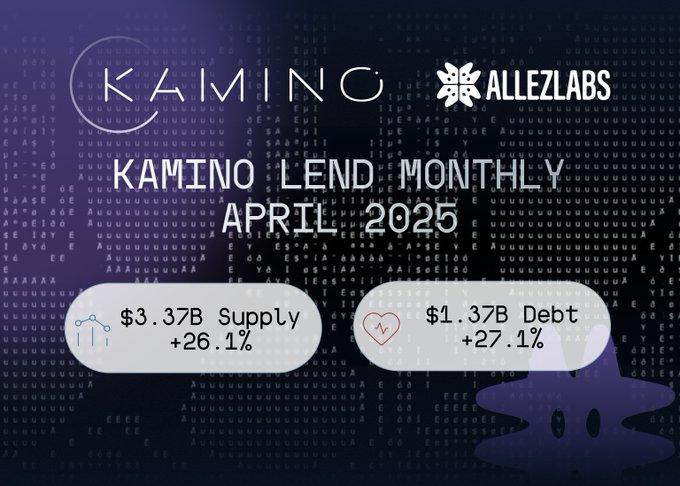Kamino Finance: The DeFi Liquidity Engine of the Solana Ecosystem
Kamino Finance is a leader in automated liquidity management protocols within the Solana ecosystem. Launched in 2022 and incubated by Hubble Protocol, it aims to enhance capital efficiency through Concentrated Liquidity Market Maker (CLMM) strategies. As of May 2025, its total value locked (TVL) has surpassed $1 billion, making it one of the largest lending protocols on Solana.

Kamino’s core features include lending, leveraged trading, and liquidity mining. Users can auto-compound assets with a single click. For instance, by depositing SOL or stablecoins, the protocol automatically allocates funds into high-yield liquidity pools and dynamically adjusts positions to reduce impermanent loss. This “passive earning” model has attracted many institutional and retail investors.
KMNO Token: A Dual Pillar of Governance and Yield
KMNO is the value core of the Kamino ecosystem. With a total supply of 10 billion tokens and an initial circulating supply of 1 billion, 7.5% of the tokens were distributed to early community users via a genesis airdrop. Key functions include:
-
Governance: Token holders can vote on protocol parameters (e.g., lending rates, risk models).
-
Revenue Capture: 50% of protocol revenue is used to buy back and burn KMNO; the other 50% goes to stakers, forming a deflationary mechanism.
-
Staking Incentives: Stakers can receive up to 300% in point bonuses, with longer lock-ups significantly increasing rewards. For example, staking $1,000 worth of KMNO for 2 years could yield a 2.7x point reward.
In May 2025, KMNO was listed on Binance, reaching a market cap of over $100 million, with a weekly price increase of 67.72%, reflecting market recognition of its underlying assets (e.g., U.S. Treasury collateral pools).
Technological Innovation: From CLMM to a Risk-Tiered Architecture
Kamino’s architecture focuses on two major upgrades:
V2 Upgrade (launched in 2024)
- Permissionless Market Creation: Users can create custom lending markets supporting any asset combination, such as AI tokens or RWA-backed pools.
- Liquidation Auction System: Introduces limit orders and a “scam wick” detection mechanism to reduce the risk of unexpected liquidations from flash crashes.
Meta-Swap Feature (April 2025)
- In collaboration with Pyth Network, Kamino enables real-time bid optimization via a searcher network, eliminating slippage and reducing MEV (Miner Extractable Value), cutting failed transactions by 40%.
Additionally, Kamino classifies assets into “isolated collateral” and “universal assets.” For example, meme coin WIF is considered isolated collateral and can only be used in specific lending scenarios, helping mitigate systemic risk.
Recent Developments and Ecosystem Expansion
In 2025, Kamino accelerated ecosystem partnerships and regulatory compliance:
-
PYUSD Yield Pool: Partnered with PayPal to launch a PYUSD lending pool, with TVL once exceeding $1 billion and an annualized yield of 13.24%, attracting over $470 million in PYUSD deposits.
-
Binance Listing: On May 6, 2025, KMNO debuted on Binance with USDT/USDC trading pairs, boosting liquidity and pushing it into the top five Solana tokens.
-
Institutional Adoption: After passing Grayscale’s compliance review, KMNO was added to its crypto index fund, drawing attention from traditional asset managers.
Users can also use JuCoin’s stablecoin financial service to convert USDT to PYUSD and access Kamino for compound yields.
Challenges and Outlook
Despite its rapid growth, Kamino faces several challenges:
-
Regulatory Pressure: Compliance requirements in RWA (e.g., KYC/AML) may limit global expansion, especially in heavily regulated regions like the U.S. and EU.
-
Yield Sustainability: Current high yields depend on external incentives (e.g., PayPal subsidies); reduction could lead to capital outflows.
-
Intensified Competition: Protocols like TrueFi and Goldfinch attract users with lower rates and cross-chain compatibility.
Looking ahead, Kamino plans to launch a real-time risk dashboard to monitor collateral health and integrate Bitcoin ecosystem assets to expand cross-chain use cases.





